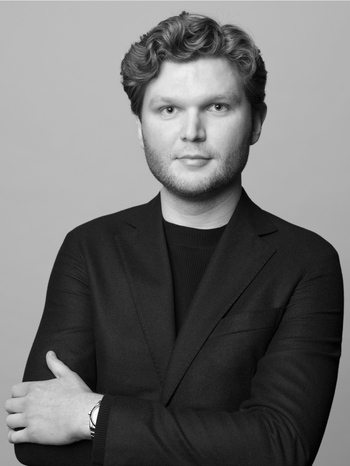Björn Trägårdh
an early pair of pewter candlesticks model "935", Firma Svenskt Tenn, Stockholm probably 1920s-30s.
In the shape of a lotus flower/water lily, stamped with the angel mark. Height 5 cm, diameter 14 cm.
Minor wear and patina.
Literature
Catalogue, "Firma Svenskt Tenn", Nordisk Rotogravyr 1931, model illustrated (n.p.).
More information
Designed in 1929 as a specially commissioned model from a Mrs Isabelle Clow in Chicago. Before it was shipped to the US, the model was exhibited at the Nationalmuseum in Stockholm
Designer
Björn Trägårdh (1908-1998) was an artist, furniture designer, draftsman, and graphic artist. He worked as a designer at Svenskt Tenn from 1928 to 1936, where he designed furniture, pewter objects, and other art industry products. Trägårdh joined Svenskt Tenn when he was only 20 years old and was influenced by a functionalist design approach. He worked with a restrained color palette, using black, white, and gray as his main colors. Additionally, he and Estrid Ericson were exhibition organizers for several notable exhibitions. After Josef Frank joined Svenskt Tenn, Trägårdh moved to Paris in 1939, where he worked as a visual artist. During and after the war, he returned to the field of crafts and the fashion industry, creating buttons and brooches for fashion houses such as Dior, Bruyère, and Schiaparelli. Trägårdh's work can be found in the collections of the National Museum in Stockholm, the Gothenburg Museum of Art, the Institut Tessin in Paris, as well as art museums in Tours and Pau, France.
Read more




















































